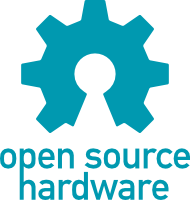- How to Adjust X and Y Axis Scale in Arduino Serial Plotter (No Extra Software Needed)Posted 2 months ago
- Elettronici Entusiasti: Inspiring Makers at Maker Faire Rome 2024Posted 2 months ago
- makeITcircular 2024 content launched – Part of Maker Faire Rome 2024Posted 5 months ago
- Application For Maker Faire Rome 2024: Deadline June 20thPosted 6 months ago
- Building a 3D Digital Clock with ArduinoPosted 11 months ago
- Creating a controller for Minecraft with realistic body movements using ArduinoPosted 12 months ago
- Snowflake with ArduinoPosted 12 months ago
- Holographic Christmas TreePosted 12 months ago
- Segstick: Build Your Own Self-Balancing Vehicle in Just 2 Days with ArduinoPosted 1 year ago
- ZSWatch: An Open-Source Smartwatch Project Based on the Zephyr Operating SystemPosted 1 year ago
Building Open Source Hardware – a new book by Alicia Gibb from OSHWA
Recently announced, this book by Alicia Gibb aims at giving you a more clear idea of what does it mean to create an open source hardware company, product or project.
It’s worth reading for those who are motivated to embark professionally in OSHW, it will be a precious and comprehensive guide:
This is the first hands-on guide to the entire process of designing and manufacturing open source hardware. Drawing on extensive personal experience with DIY, maker, and hardware hacking projects, the contributors share proven approaches to design, remixing, fabrication, manufacturing, troubleshooting, licensing, documentation, and running an open source hardware business.
Part I explains how open source hardware has emerged and evolved, what its licenses mean, and the growing role of standards in making hardware more open. In Part II the authors offer expert advice on key tasks ranging from creating derivatives to using source files. Part III turns to production, showing how to manufacture at multiple scales, from personal to commercial.
Appendixes include valuable checklists for design, manufacture, security, and documentation. To foster even more hands-on learning and experimentation, the low-cost Blinky Buildings open source hardware kit is used as an example throughout.
Learn how to
- Get involved in the open source hardware community: know its history and values
- Develop designs you can successfully prototype and manufacture
- Walk step by step through making derivatives from existing projects
- Build open source 3D printers and remix 3D printable objects
- Create open source wearables
- Work with diverse source files, from electronics to physical materials
- Fabricate your own designs
- Move from prototype to commercial manufacturing, and troubleshoot problems
- Choose a business model and build a profitable open source hardware company
- Avoid pitfalls associated with trademarks, copyrights, patents, and licensing
- Write documentation other hardware hackers can use
- Use open source hardware in education, helping students learn without boundaries

















Pingback: Top Ten most exciting news in Open Hardware in 2014 | Open Electronics